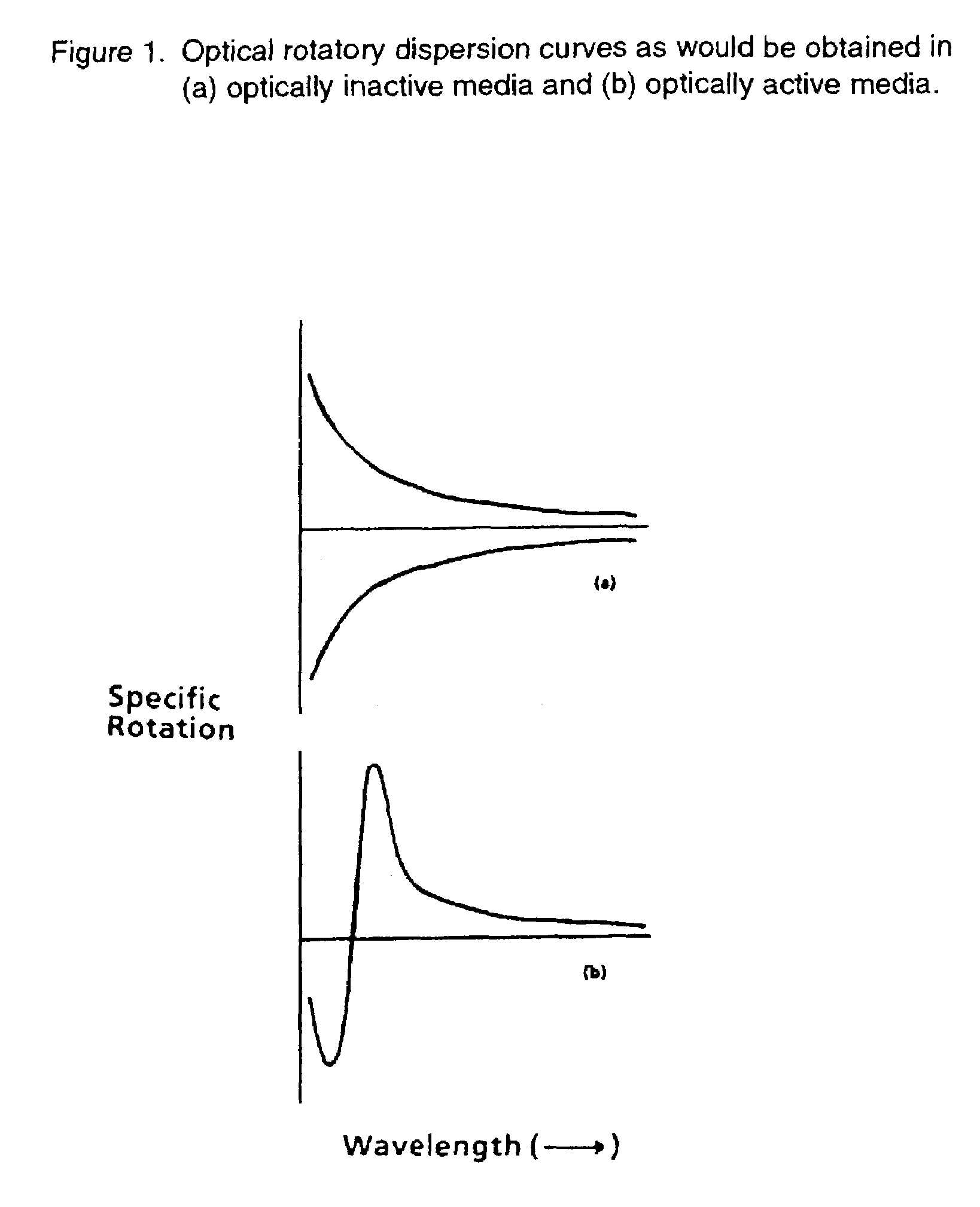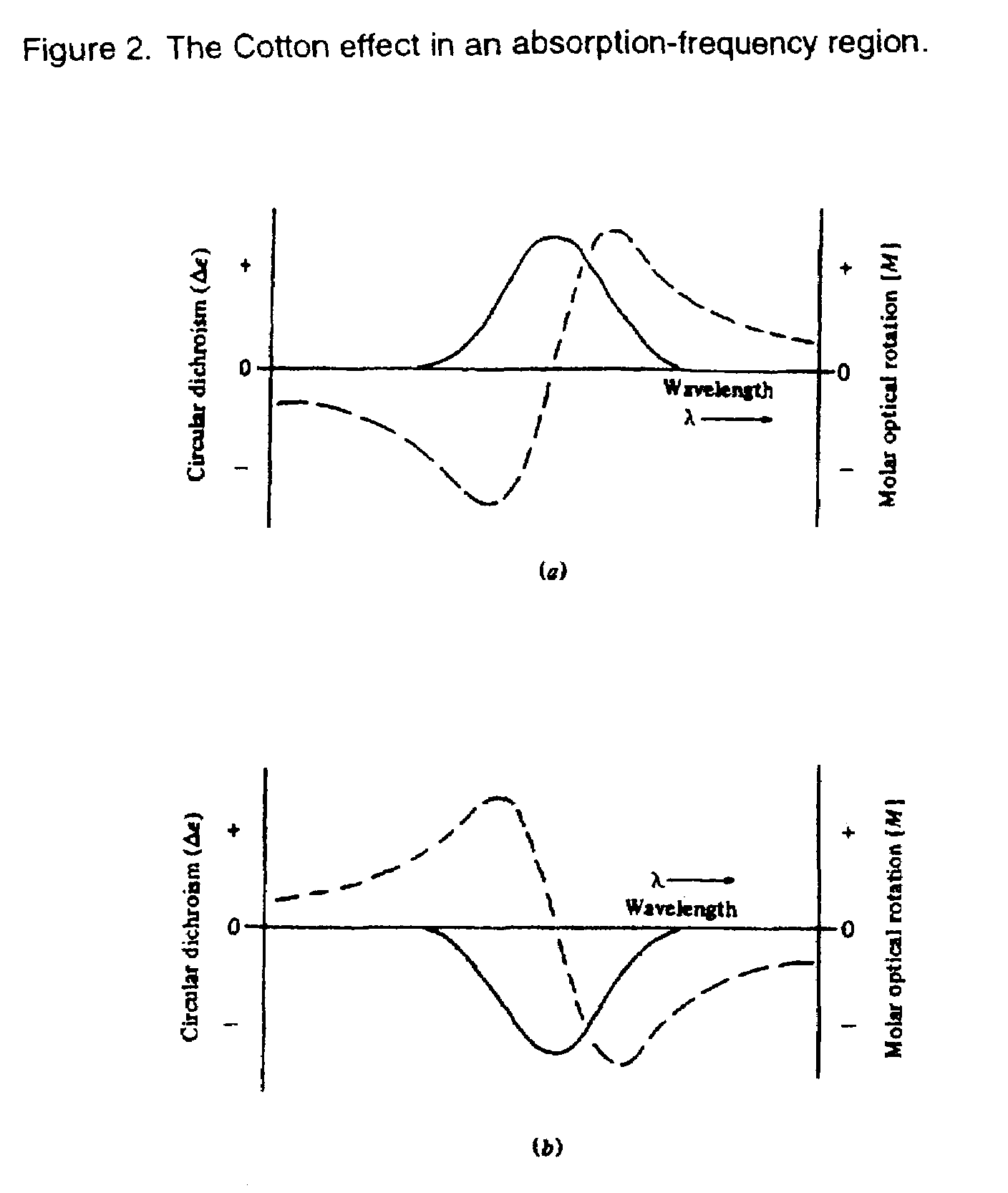Optical isomer separation method
a technology of optical isomer and separation method, which is applied in the direction of separation process, filtration separation, instruments, etc., can solve problems such as difficulty in task, and achieve the effect of high sensitiveness
- Summary
- Abstract
- Description
- Claims
- Application Information
AI Technical Summary
Benefits of technology
Problems solved by technology
Method used
Image
Examples
Embodiment Construction
[0037]In FIG. 1, we have shown the optical activity with the wavelengths leading to an optical rotatory dispersion curve. This means that an ORD curve is a function of the difference in refractive index of a substance for left or right handed circularly polarized light with wavelength. For a compound, which does not have chromophore in the spectral region examined, the optical activity progressively decreased in magnitude as the wavelength increases.
[0038]It is also shown that for a specific case, above 300 nm a positive plain ORD curve is obtained.
[0039]If a compound presents one or several optically active absorption bands, its ORD curve will show peaks or troughs in the spectral region in which the chromophores absorb, and the ORD curve is called the Cotton Effect curve. This is illustrated in FIG. 2.
[0040]FIG. 3. shows the general design of a spectrophotometer to measure Circular Dichroism (CD). White radiation from a source (S) 1 enters the wavelength scanning monochromator (MO...
PUM
| Property | Measurement | Unit |
|---|---|---|
| temperature | aaaaa | aaaaa |
| concentrations | aaaaa | aaaaa |
| morphology | aaaaa | aaaaa |
Abstract
Description
Claims
Application Information
 Login to View More
Login to View More - R&D
- Intellectual Property
- Life Sciences
- Materials
- Tech Scout
- Unparalleled Data Quality
- Higher Quality Content
- 60% Fewer Hallucinations
Browse by: Latest US Patents, China's latest patents, Technical Efficacy Thesaurus, Application Domain, Technology Topic, Popular Technical Reports.
© 2025 PatSnap. All rights reserved.Legal|Privacy policy|Modern Slavery Act Transparency Statement|Sitemap|About US| Contact US: help@patsnap.com



